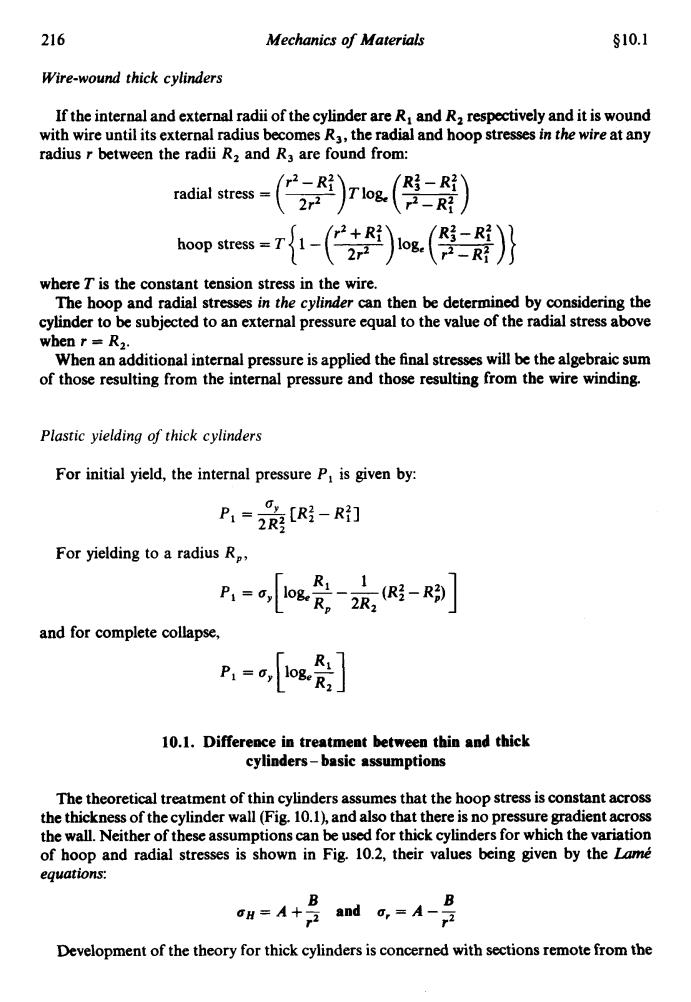正在加载图片...

216 Mechanics of Materials §10.1 Wire-wound thick cylinders If the internal and external radii of the cylinder are R,and R2 respectively and it is wound with wire until its external radius becomes R3,the radial and hoop stresses in the wire at any radius r between the radii R2 and R3 are found from: hoop stress r-(+)()} where T is the constant tension stress in the wire. The hoop and radial stresses in the cylinder can then be determined by considering the cylinder to be subjected to an external pressure equal to the value of the radial stress above when r=R2. When an additional internal pressure is applied the final stresses will be the algebraic sum of those resulting from the internal pressure and those resulting from the wire winding. Plastic yielding of thick cylinders For initial yield,the internal pressure P,is given by: R,=录[R好-R1 For yielding to a radius R, P-,[是,-购 and for complete collapse, -,[是] 10.1.Difference in treatment between thin and thick cylinders-basic assumptions The theoretical treatment of thin cylinders assumes that the hoop stress is constant across the thickness of the cylinder wall(Fig.10.1),and also that there is no pressure gradient across the wall.Neither of these assumptions can be used for thick cylinders for which the variation of hoop and radial stresses is shown in Fig.10.2,their values being given by the Lame equations: =M+,片4ndg,=A- B Γ2 Development of the theory for thick cylinders is concerned with sections remote from the216 Mechanics of Materials $10.1 Wire-wound thick cylinders If the internal and external radii of the cylinder are R, and R, respectively and it is wound with wire until its external radius becomes R,, the radial and hoop stresses in the wire at any radius r between the radii R, and R3 are found from: radial stress = ( -27i-) r2 - R: Tlog, (-) Ri - R: r2 - Rt r2 + R: R; - R: hoop stress = T { 1 - ( - 2r2 )'Oge(r2-Rf)} where T is the constant tension stress in the wire. The hoop and radial stresses in the cylinder can then be determined by considering the cylinder to be subjected to an external pressure equal to the value of the radial stress above when r = R,. When an additional internal pressure is applied the final stresses will be the algebraic sum of those resulting from the internal pressure and those resulting from the wire winding. Plastic yielding of thick cylinders For initial yield, the internal pressure P, is given by: For yielding to a radius R,, and for complete collapse, 10.1. Difference io treatment between thio and thick cylinders - basic assumptions The theoretical treatment of thin cylinders assumes that the hoop stress is constant across the thickness of the cylinder wall (Fig. lO.l), and also that there is no pressure gradient across the wall. Neither of these assumptions can be used for thick cylinders for which the variation of hoop and radial stresses is shown in Fig. 10.2, their values being given by the Lame equations: B B an=A+- and q=A-- r2 r2 Development of the theory for thick cylinders is concerned with sections remote from the